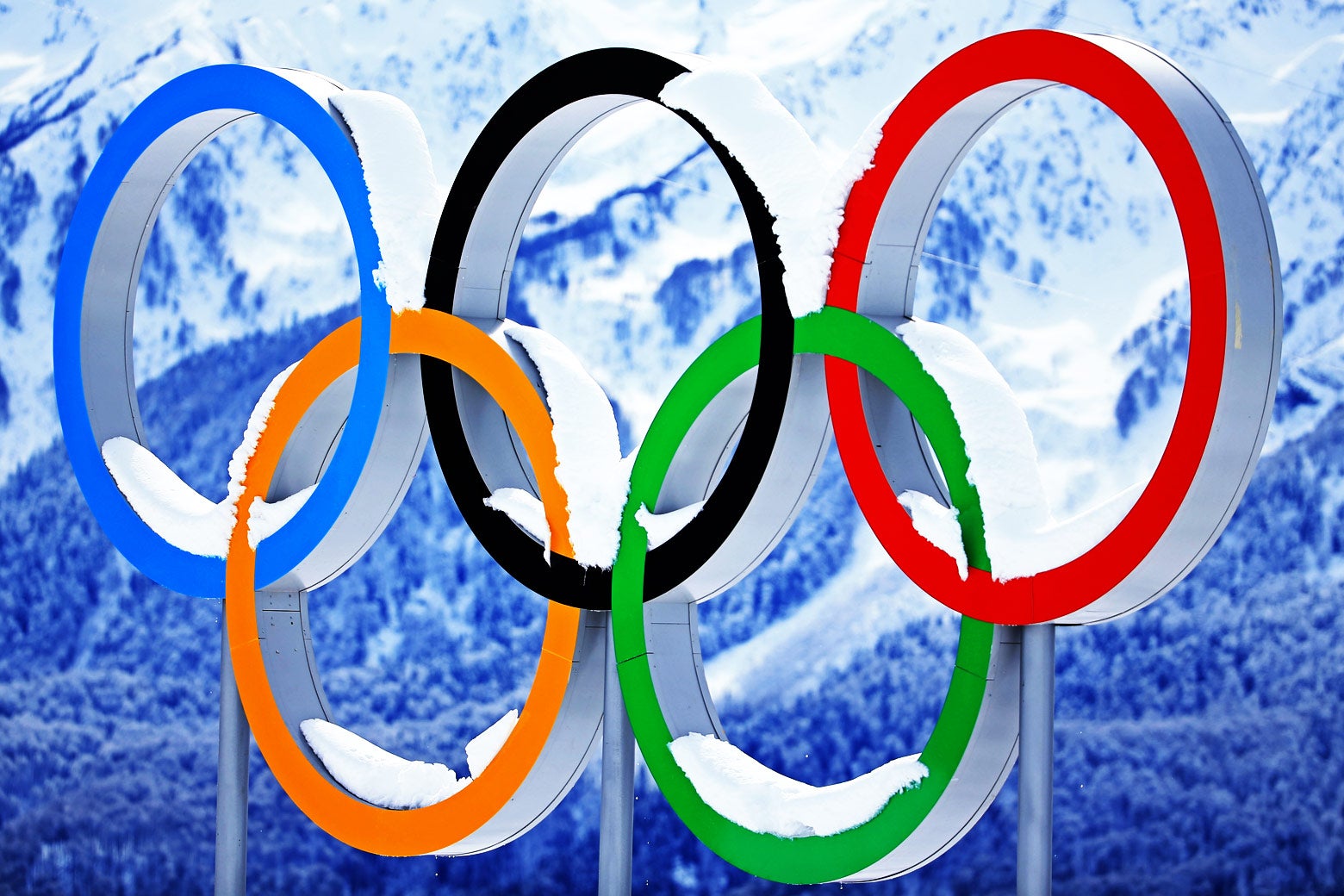The Winter Olympics are the Hydrox cookies of quadrennial international sporting events: the less glamorous, less popular, and more challenging-to-access version of a popular product. The sports are bizarre yet oddly similar. There are three different styles of skiing (four if you count snowboarding, which I do, not to mention skiing with guns), multiple variations on slip-and-slide, disciplines that reward participants for showing off more brazenly than their rivals, and one that involves rocks, skips, and strange Scandinavian pants. What’s more, the helmeted and salopetted athletes are largely anonymous. Unless you are Canadian, or have no way of fast-forwarding through NBC’s commercials, I bet you can’t name more than five people who are vying for medals over the coming fortnight, even if I spot you Shaun White and Lindsey Vonn.
All these things are indisputably true. Nevertheless, the Winter Games are in no way inferior to their summer cousin. Indeed, they are way Olypimpicsier, which means they are the best Olympics.
Olympicsosity isn’t merely a measure of oddity, which is plentiful in the warm-weather Games—remember, keirin track cycling, modern pentathlon, and synchronized swimming are all on the summer schedule. It’s undeniable, though, that the Winter Games are the doofier of the two, and we all get the pleasure of reveling in the kookiness. In summer, we see only momentary snatches of the wackiest sports during NBC’s primetime telecast, which is dominated by the likes of Usain Bolt, Michael Phelps, and Simone Biles, all of whom compete in familiar sports. Sure, a casual viewer might not be able to explain the intricacies of the gymnastics scoring system, but most of us have run, swam, and done a somersault at some point in our lives. But while the summer stars are just like us, only better, even outdoorsy Vermonters are strangers to aerials and skeleton. That stuff is weird.
Of course, the Winter Olympics has its glamour event, and every four years we all pretend to recognize the difference between a triple axel and a double lutz as the figure skaters sparkle before us. Still, NBC knows we can’t survive on sequins alone. Over the next two weeks, we’ll see inspirational segments about lugers, biathletes, and mogulers, and terms like “slopestyle” will be thrown around as if they mean something to anyone who doesn’t have a slopestyler in their immediate family.
What this means in practice is that all of us are Olympics dilettantes. This level playing field of fandom is another key ingredient of Olympicsosity. In a world in which superfans have access to more stats than ever before, the casual viewer can feel left out. If you go to a Super Bowl party and don’t know the rules of football, you might end up feeling alienated, or hesitant to ask questions about how the game is played. But for the next few weeks, all of us will have the same level of expertise: none at all. Tape some of those overnight telecasts and learn a couple of ski jumpers’ names, and even total know-nothings can bluff their way through some serious sports talk.
Although many of the winter events are entrancingly goofy—an essential element of Olympicsosity, especially as whimsy becomes harder to find in the increasingly somber world of professional sports—they are also blessedly easy to understand. Set aside figure skating’s complicated points system and hockey’s confusing international rules (easy for me to do, because I ignore all events for which the Olympics is not the highest level of competition), and it’s basically fastest down the hill, fastest around the obstacles, fastest over the bumpy bits (with added style points), fastest skier, fastest skier who can also shoot straight and/or take a long jump off a hill, fastest skater, biggest show-off, and team that gets the most big rocks closest to a circle at the end of a slab of ice. This perhaps explains why many of us develop our love of the Winter Olympics in childhood.
The best part is, the Winter Games are a short-term obsession that can be jettisoned at the end of the month. You don’t need to subscribe to a “league pass,” monitor a dashboard of stats for a fantasy league, or even memorize a roster of player names. The Olympics are a fun holiday fling—a short vacation from the usual TV-viewing and sports-watching rut. No need to buy a team jersey or learn a fight song, and that’s just as well. One night of bobsled every four years is exactly the right amount.
Read the rest of Slate’s coverage of the Pyeongchang Olympics.
• How to Watch the Winter Olympics If You Don’t Have Cable
• Fifty Years Ago, the Olympics Almost Banned National Anthems and Flags
• The United States’ Olympic Appeasement in 1936 Helped Fuel the Rise of Nazi Germany
